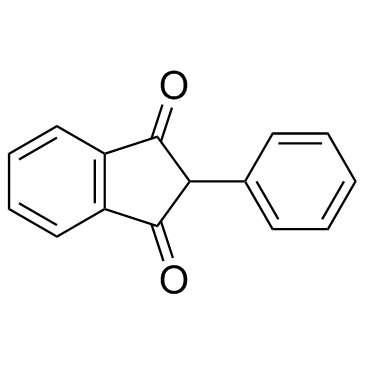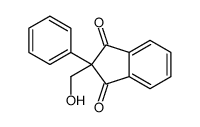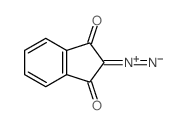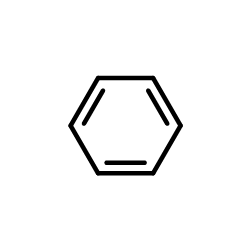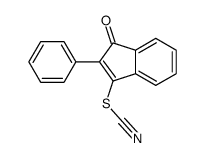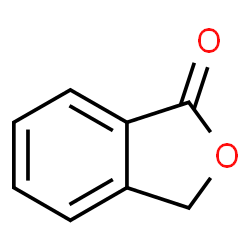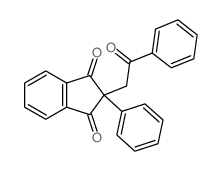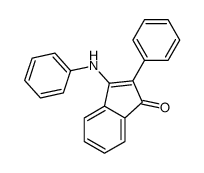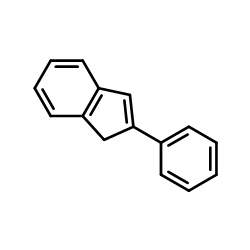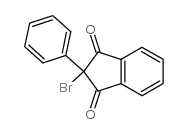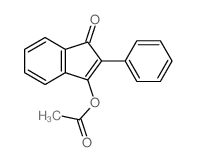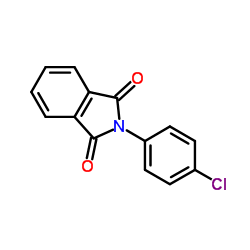CHEMICAL IDENTIFICATION
-
RTECS NUMBER :
-
NK6125000
-
CHEMICAL NAME :
-
1,3-Indandione, 2-phenyl-
-
CAS REGISTRY NUMBER :
-
83-12-5
-
LAST UPDATED :
-
199512
-
DATA ITEMS CITED :
-
12
-
MOLECULAR FORMULA :
-
C15-H10-O2
-
MOLECULAR WEIGHT :
-
222.25
-
WISWESSER LINE NOTATION :
-
L56 BV DV CHJ CR
HEALTH HAZARD DATA
ACUTE TOXICITY DATA
-
TYPE OF TEST :
-
TDLo - Lowest published toxic dose
-
ROUTE OF EXPOSURE :
-
Oral
-
SPECIES OBSERVED :
-
Human - man
-
DOSE/DURATION :
-
42500 ug/kg/17D-I
-
TOXIC EFFECTS :
-
Kidney, Ureter, Bladder - interstitial nephritis Kidney, Ureter, Bladder - urine volume decreased
-
REFERENCE :
-
BMJOAE British Medical Journal. (British Medical Assoc., BMA House, Tavistock Sq., London WC1H 9JR, UK) V.1- 1857- Volume(issue)/page/year: 1,1655,1963
-
TYPE OF TEST :
-
LDLo - Lowest published lethal dose
-
ROUTE OF EXPOSURE :
-
Oral
-
SPECIES OBSERVED :
-
Human - man
-
DOSE/DURATION :
-
48 mg/kg/27D-I
-
TOXIC EFFECTS :
-
Blood - other changes Nutritional and Gross Metabolic - body temperature increase
-
REFERENCE :
-
NZMJAX New Zealand Medical Journal. (New Zealand Medical Assoc., P.O. Box 156, Wellington, New Zealand) V.1- 1900- Volume(issue)/page/year: 57,283,1958
-
TYPE OF TEST :
-
TDLo - Lowest published toxic dose
-
ROUTE OF EXPOSURE :
-
Unreported
-
SPECIES OBSERVED :
-
Human - man
-
DOSE/DURATION :
-
22 mg/kg/17D-I
-
TOXIC EFFECTS :
-
Liver - hepatitis (hepatocellular necrosis), diffuse Kidney, Ureter, Bladder - interstitial nephritis Skin and Appendages - dermatitis, other (after systemic exposure)
-
REFERENCE :
-
AIMEAS Annals of Internal Medicine. (American College of Physicians, 4200 Pine St., Philadelphia, PA 19104) V.1- 1927- Volume(issue)/page/year: 52,706,1960
-
TYPE OF TEST :
-
TDLo - Lowest published toxic dose
-
ROUTE OF EXPOSURE :
-
Unreported
-
SPECIES OBSERVED :
-
Human - man
-
DOSE/DURATION :
-
90 mg/kg/27D-I
-
TOXIC EFFECTS :
-
Liver - hepatitis (hepatocellular necrosis), diffuse Skin and Appendages - dermatitis, allergic (after systemic exposure)
-
REFERENCE :
-
CMAJAX Canadian Medical Association Journal. (Canadian Medical Assoc., POB 8650, Ottawa, ON K1G 0G8, Canada) V.1- 1911- Volume(issue)/page/year: 77,1028,1957
-
TYPE OF TEST :
-
LDLo - Lowest published lethal dose
-
ROUTE OF EXPOSURE :
-
Unreported
-
SPECIES OBSERVED :
-
Human - man
-
DOSE/DURATION :
-
1683 mg/kg/31D-I
-
TOXIC EFFECTS :
-
Gastrointestinal - nausea or vomiting Kidney, Ureter, Bladder - changes in tubules (including acute renal failure, acute tubular necrosis) Skin and Appendages - dermatitis, other (after systemic exposure)
-
REFERENCE :
-
LANCAO Lancet. (7 Adam St., London WC2N 6AD, UK) V.1- 1823- Volume(issue)/page/year: 1,920,1963
-
TYPE OF TEST :
-
LD50 - Lethal dose, 50 percent kill
-
ROUTE OF EXPOSURE :
-
Oral
-
SPECIES OBSERVED :
-
Rodent - rat
-
DOSE/DURATION :
-
163 mg/kg
-
TOXIC EFFECTS :
-
Details of toxic effects not reported other than lethal dose value
-
REFERENCE :
-
EJMCA5 European Journal of Medicinal Chemistry--Chimie Therapeutique. (Editions Scientifiques Elsevier, 29 rue Buffon, F-75005, Paris, France) V.9- 1974- Volume(issue)/page/year: 9,519,1974
-
TYPE OF TEST :
-
LD50 - Lethal dose, 50 percent kill
-
ROUTE OF EXPOSURE :
-
Intraperitoneal
-
SPECIES OBSERVED :
-
Rodent - rat
-
DOSE/DURATION :
-
190 mg/kg
-
TOXIC EFFECTS :
-
Behavioral - rigidity (including catalepsy) Behavioral - muscle contraction or spasticity
-
REFERENCE :
-
THERAP Therapie. (Doin, Editeurs, 8, Place de l'Odeon, F-75006 Paris, France) V.1- 1946- Volume(issue)/page/year: 16,34,1961
-
TYPE OF TEST :
-
LD50 - Lethal dose, 50 percent kill
-
ROUTE OF EXPOSURE :
-
Oral
-
SPECIES OBSERVED :
-
Rodent - mouse
-
DOSE/DURATION :
-
175 mg/kg
-
TOXIC EFFECTS :
-
Details of toxic effects not reported other than lethal dose value
-
REFERENCE :
-
SMWOAS Schweizerische Medizinische Wochenschrift. (Schwabe & Co., Steintorst 13, 4010 Basel, Switzerland) V.50- 1920- Volume(issue)/page/year: 90,213,1960
-
TYPE OF TEST :
-
LD50 - Lethal dose, 50 percent kill
-
ROUTE OF EXPOSURE :
-
Intraperitoneal
-
SPECIES OBSERVED :
-
Rodent - mouse
-
DOSE/DURATION :
-
150 mg/kg
-
TOXIC EFFECTS :
-
Details of toxic effects not reported other than lethal dose value
-
REFERENCE :
-
PHARAT Pharmazie. (VEB Verlag Volk und Gesundheit, Neue Gruenstr. 18, Berlin DDR-1020, Ger. Dem. Rep.) V.1- 1946- Volume(issue)/page/year: 27,520,1972
-
TYPE OF TEST :
-
LD50 - Lethal dose, 50 percent kill
-
ROUTE OF EXPOSURE :
-
Subcutaneous
-
SPECIES OBSERVED :
-
Rodent - mouse
-
DOSE/DURATION :
-
140 mg/kg
-
TOXIC EFFECTS :
-
Details of toxic effects not reported other than lethal dose value
-
REFERENCE :
-
DIPHAH Dissertationes Pharmaceuticae. (Warsaw, Poland) V.1-17, 1949-65. For publisher information, see PJPPAA. Volume(issue)/page/year: 8,289,1956
-
TYPE OF TEST :
-
LD50 - Lethal dose, 50 percent kill
-
ROUTE OF EXPOSURE :
-
Intravenous
-
SPECIES OBSERVED :
-
Rodent - mouse
-
DOSE/DURATION :
-
130 mg/kg
-
TOXIC EFFECTS :
-
Behavioral - rigidity (including catalepsy) Behavioral - muscle contraction or spasticity
-
REFERENCE :
-
THERAP Therapie. (Doin, Editeurs, 8, Place de l'Odeon, F-75006 Paris, France) V.1- 1946- Volume(issue)/page/year: 16,34,1961 *** REVIEWS *** TOXICOLOGY REVIEW AJMEAZ American Journal of Medicine. (Technical Pub., 875 Third Ave., New York, NY 10022) V.1- 1946- Volume(issue)/page/year: 38,409,1965
|



